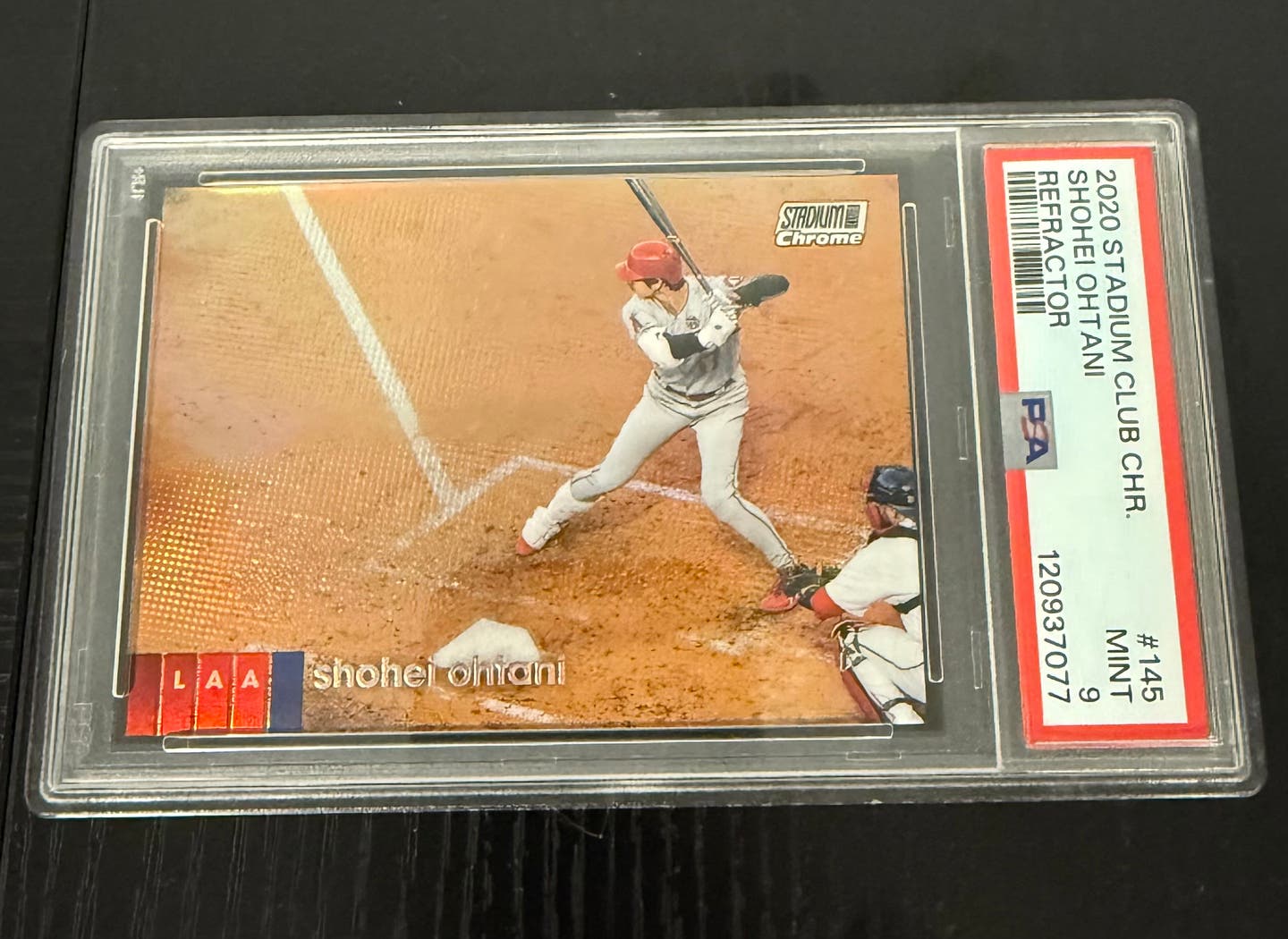Features
Longtime Promoter Nick Shoff Has Seen the Hobby From All Angles
By Doug Koztoski
“Cause all I wanna do is go the distance.” Sylvester Stallone, a relative unknown, uttered that line as he starred in the original Rocky movie, a smash hit in 1976. That same year Rocky Balboa “arrived,” Nick Shoff promoted his first sports card show.
Forty years later, several with Rocky sequels of one degree or another, including 2015’s Creed, Shoff still promotes shows – and has done so for four straight decades, one of the longest streaks in the hobby. There have been ups and downs along the way, of course, but it looks like Shoff has gone the distance and then some.
Why does the hobby pioneer, 72, continue to put shows together? Simply put, Shoff likes it.
Yet perhaps a rather timeless excerpt from a Baseball Hobby News piece he wrote many years ago not only best summarizes his thoughts on show promotion, but also collecting trading cards in general: “Enjoyment is the name of the game in any hobby, and certainly it holds true for card collecting. The hobby has changed, and some of the changes are a detriment. The scope of the hobby has changed in the past years, yet for the collector, there is still the opportunity to have ‘fun’ in a very good hobby.”
A collector first
The fun of collecting sports cards began for Shoff during his early 1950s Bronx, N.Y., childhood.
“I was good at flipping and trading cards,” he recalled. A few of his all-time favorite sets he saw as they debuted. “I liked the artwork of the 1953 Topps set, it was just cool,” he said. He also put the classic 1953 Bowman Color issue on his short list. “The photography in the Bowman set was fantastic.”
As Shoff built his collection over the years, he branched out. “At one time I had every Bowman and Topps set for everything but hockey, except for the ’52 Topps Mantle. I always thought it was too expensive,” said the longtime Maryland resident. And he collected non-sports cards, too, with the 1951 Bowman Jets, Rockets, Spacemen issue as his top choice in that category.
After collecting for several years, Shoff set aside the hobby for other interests. But much like bamboo – where the roots run deep and even if you chop it down at the surface, the plant usually grows back – the lifetime N.Y. Yankees fan eventually returned to collecting.
That next hobby chapter for him came about by chance while visiting an antique store around 1970, as Shoff spotted some early 1900s baseball cards. His interest in collecting sprouted anew.
By the mid-1970s, Shoff and John Scott, now of Huggins & Scott Auctions, teamed up to start the famed House of Cards sports card shop in Wheaton, Md. In the fall of 1976, the duo promoted their first show, when shows were fairly uncommon, in the basement of a Howard Johnson’s Hotel, just a few blocks away from their store.
As an aside, it just so happens I was a House of Cards customer from the beginning, so when I heard about that inaugural show they were putting on in 1976, I rented a table with the bulk of my doubles that I had accumulated in my 14 years of life. The event was, as I recall, enjoyable and well attended, one where I saw my first 1952 Topps Mickey Mantle card, with an asking price of $300 or so. I passed on it.
For much of the next 15 years after that first Shoff show, the hobby experienced explosive growth, as sports card stores and shows became almost as prevalent as chicken wings and pizza at a Super Bowl party. The only difference of sorts was that the party was every weekend, at the very least.
Ultimately, Shoff sold his stake in the House of Cards and another similar store that he and Scott owned in Virginia years ago, but he kept promoting shows on his own. The card shows where quite the change of pace from his full-time job with the Veterans Administration Hospital, where he first worked as a medical technologist and then eventually as a lab manager. Shoff retired from the VA in 2010, after nearly 39 years of service. Along the way, in addition to penning some pieces for Baseball Hobby News, he also served as an occasional scribe for SCD.
At the hobby’s height some 25 years ago, he put together 48 shows in a year, most likely the busiest 12 months he ever had in that respect. Nowadays it is more like one show a month. Even in the lean years for the hobby, however, when sometimes putting on a show meant operating at a loss, Shoff said his pioneer spirit kept him motivated.
“I believed in the hobby,” he proudly said. “It had been good to me between the store and the shows, and I felt I wanted to keep it going.”
Shifts along the way
Like most people involved in the hobby in the past couple of decades, Shoff has seen several changes, some he has mixed feelings about.
For starters, and as a collector at heart, Shoff takes issue with certain types of “chase” (insert) cards in packs.
“I don’t like them chopping up a bat or a jersey (and putting the piece of the item on a card),” said Shoff. “Have it so it’s a lottery so they can win the item (intact).”
And while we are on the subject of packs, he echoes a straightforward strategy that flows through the card collecting community: “Make packs more affordable to increase the likelihood of more kids entering and staying in the hobby. Kids are the future of the hobby.”
When it comes to grading, Shoff is OK with companies authenticating cards and other items, but up to a point. On one hand, as interest in the sports card hobby waned in the early-to-mid 1990s for a variety of reasons including overproduction of cards, higher-priced packs and the MLB player’s strike, card grading provided a much-needed shot in the arm. The veteran collector and show promoter said slabbing cards in plastic holders helped keep the hobby together at certain levels, and that reignited the pastime for many.
“In that sense grading helped the hobby get back on its feet,” said Shoff. “It brought back the investor and it made the collector want to upgrade their sets.”
But he feels the grading companies went too far when, after gaining a foothold, they began operating like art dealers.
“The grader’s services are based on value, where to do the grading, it has to do with the card itself, it has nothing to do with the players on the card,” he noted. “They go through the same process whether it’s ‘Joe Blow’ or Babe Ruth on the card. But yet they come back and tell you that because it’s a Babe Ruth card and it’s worth a lot of money, ‘we’re going to charge you more,’ and I don’t understand that,” Shoff said with frustration. “The graders and authenticators are getting carried away with themselves, and they are trying to make every dime they can at the expense of the collector.”
Shoff also sees prices on the high-end of the hobby getting out of control and that the bubble may burst soon. “And the person left holding the bag, when they cannot resell their item for more than what they paid for it will be very unhappy,” he stressed. “And then prices will fall.”
He still shakes his head in amazement, for instance, as to the relatively astronomical prices commanded by low-end ’52 Topps Mantles. “That is not a scarce card.” And it’s especially not hard to find in off condition, he said.
The future is looking up
But overall, the hobby pilot light burns bright for Shoff. He still collects some sports items with an emphasis on the Yankees and the Washington Senators, plus he likes vintage sci-fi toys and cowboy-related pieces, among other collectibles.
Shoff wonders how the hobby will be in a decade or two as the average collector aged 65-plus moves on from the hobby in one form or another, but he is hopeful.
“The thing I still find phenomenal is that cigarette cards do well,” he said. “And none of the people around today saw those guys play.”
Meantime, it’s a lock Shoff will put on shows for the foreseeable future, partly because he feels people get a lot out of them. “I still think there is nothing like going to a show, any show, just to go and see what’s out there,” he noted. “Because if you go on eBay, you are (often) trying to find a specific thing. If you go to a show you will see things that you don’t know you want, but you’ll see it and say ‘that’s great’ and you’ll buy it.”
In an August 1979, Wall Street Journal piece on sports card collecting, Shoff received the last few bits of ink, and they are worth revisiting: “Shop around. Too many dealers who don’t know a baseball card from a Twinkie are giving advice.” That basic tip still applies throughout the hobby, whether for in-person or online transactions of any description.
Shoff, the survivor, the one with what some might say is the “Eye of the Tiger,” has his next show in June. As has happened for decades, when the event begins, he will stand near the room’s entrance and greet early birds and dealers with a hearty, “It’s show time!” Going “the distance” yet again, in more ways than one.
Doug Koztoski is a frequent contributor to SCD. He welcomes comments and questions related to this article at dkoz3000@gmail.com.








